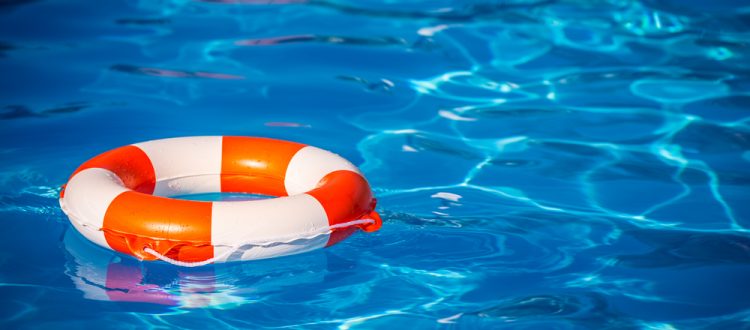Pool Safety. 6 Tips that could save your child’s life.
It’s hot (yay!) and everyone is seeking out the closest watering hole or pool. Break out the beach chairs, grab a magazine and relax by the water…what could go wrong? It is horrific to even consider the possibility, but kids drown in swimming pools every day.
Did you know that it takes only 2-3 minutes to lose consciousness and stop breathing? If the brain goes more than 6 minutes without oxygen, someone has lost a child. Here are some things you can do to lessen the chances of it being your child.
1. Don’t take your eyes off of them. Not even for a second.
The phone rings, you need to grab a new bottle of sunscreen, or cobble together some snacks…there are a million reasons to run into the house for what you may think is a quick task and hauling the kids out of the pool seems like such a chore for everyone involved. But it takes only a second for a child to swim to the deep end or hit their head doing cannonballs. Make it a rule that when a parent leaves the premises, everyone gets out of the pool, no exceptions.
2. Don’t rely on life guards, other parents or older kids to be your eyes and ears.
True story. An old colleague of mine was at a party where a mother had to run to her car and charged another parent with watching her son in the pool while she stepped away for a few minutes. When she got back, they were doing mouth-to-mouth on her little boy and the unthinkable happened. They are accidents and they are tragic, but make sure you keep the safety of your children in your own hands.
3. Safety in numbers is a myth.
I’ve often asked myself, “How is it possible kids drown in public pools when there are so many people around?” It happens, and it happens a lot. After my neighbor yanked my three year old out after he tripped off the pool step (which I completely missed and felt like the worst mother ever), I get it now. A crowded pool is even more dangerous than a private one because of all the commotion and parents tend to let their guard down slightly thinking, “If I don’t see my child fall in, someone will.” Whether you’re at a public pool or a pool party, be extremely vigilant of your kids’ activities in the water. Most children won’t call for help and it’s easy to mistake a child in peril for a child splashing or swimming under water.
4. Talk to your kids about water safety.
Just like we practice fire drills, talk to your kids about what how to stay safe while swimming. Explain the pool boundaries (i.e. no swimming over your head), encourage them to yell for help and teach them to locate the closest pool edge or solace above water. They’ll be more confident in the water and so will you.
5. Enroll your child in swim lessons.
You may think your child is a “swims like a fish” in the water, but would they know how to swim themselves to safety or get out of a dangerous situation? Professional swim lessons not only teach kids the basics, but also instill best practices in water safety. Most public pools and local YMCAs offer swim lessons and there are many private companies that offer lessons for all ages and abilities. Teach your kids to be strong swimmers. It could save their life.
6. Enroll yourself in a CPR course.
We don’t even want to think the unthinkable could happen, but would you be prepared if it did? Contact your local hospital and sign up for a life saving CPR course that teaches you the basics of how to handle an emergency situation until medical professionals arrive. Check out these CPR instructional videos for infants, kids and adults. Knowledge is power!
Accidents can happen even when you’ve taken every safety precaution available. There’s no substitute for being a hyper-vigilant watch dog when it comes to your kids and the water. This is one situation where being “overprotective” is definitely OK.






Great reminders as we enter the busy summer swimming season!